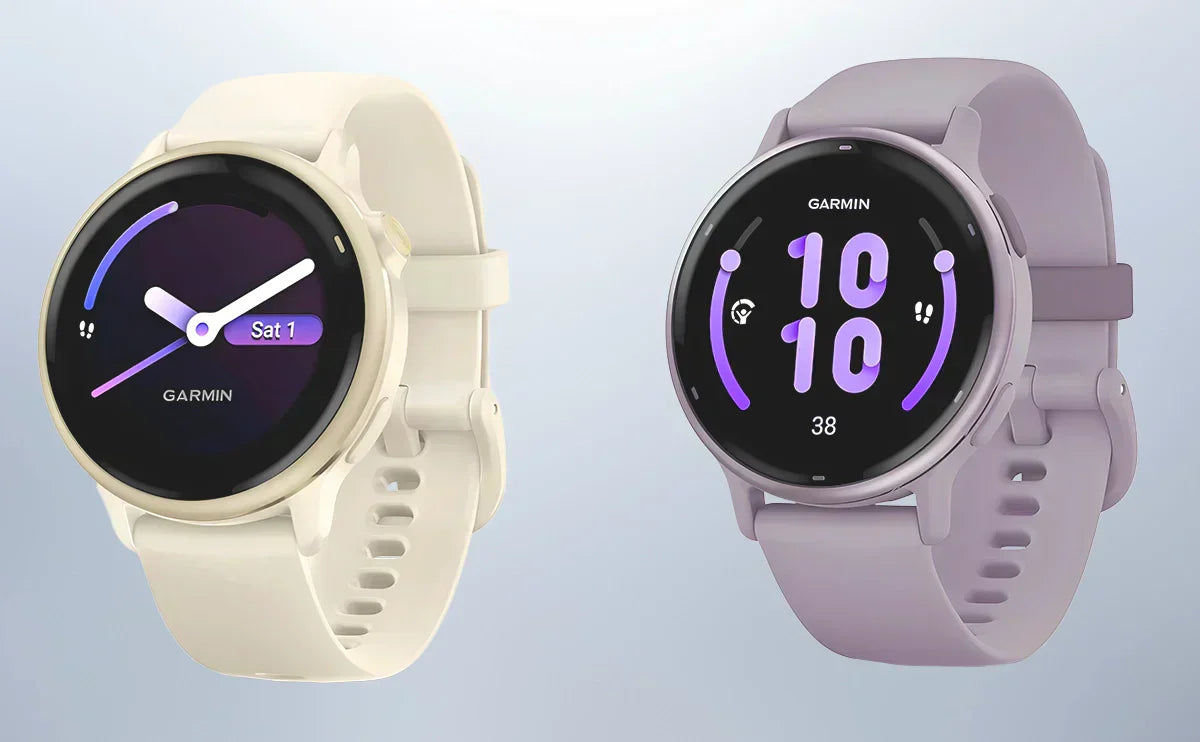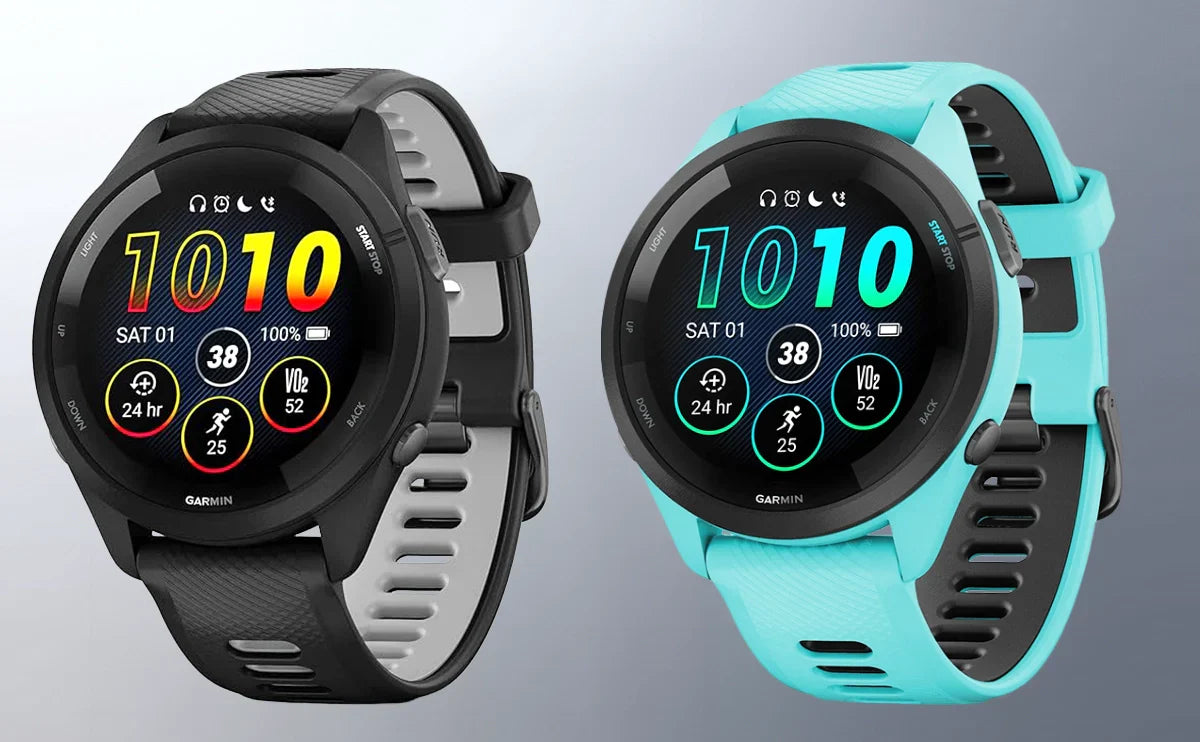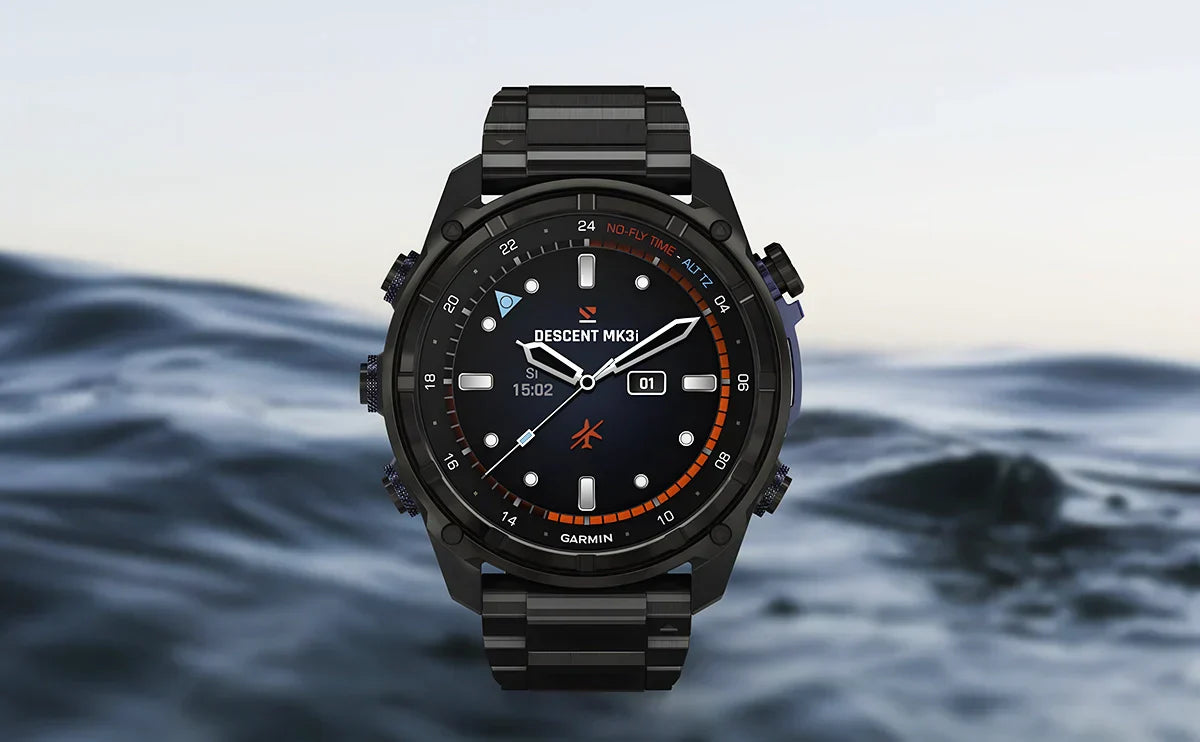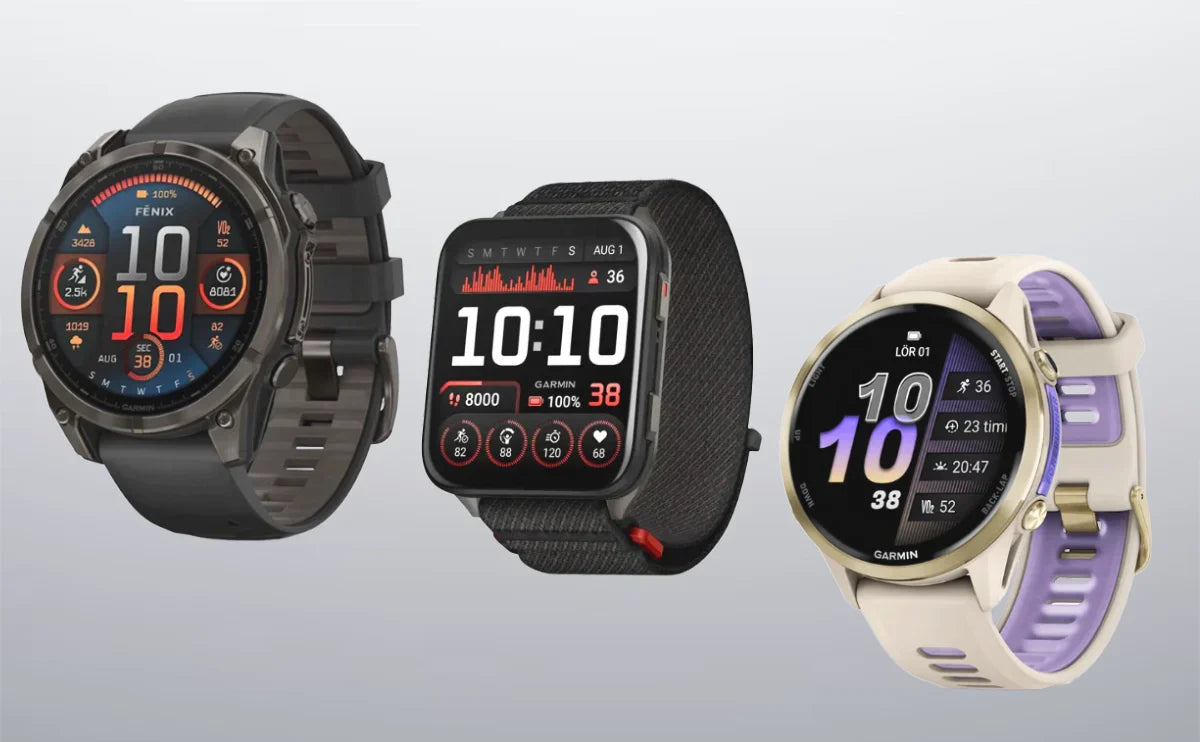Main content:
- Stable Pricing with Clear Positioning
- Garmin Vivoactive 6 vs Vivoactive 5 - Specifications
- Garmin Vivoactive 6 vs Vivoactive 5 - Similarities and Differences
- Design & Display - Small Changes, Big Impact
- Smarter Experience, Enhanced UI and Storage
- Smarter Health Tracking, Deeper Recovery Insights
- Comprehensive Sports Upgrades with More Professional Running Features
- Enhanced Precision and Smarter Navigation
- Stable Battery Life with Smarter Power Management
- Garmin Vivoactive 6 vs Vivoactive 5 - Summary and Final Recommendation
The Garmin Vivoactive 6 has officially arrived, serving as the successor to the Vivoactive 5. While both are priced at an accessible $299, the Vivoactive 6 delivers meaningful improvements in software experience, expanded workout modes, and overall usability. Although the hardware remains largely unchanged, the added features and system enhancements make it a compelling upgrade.
Meanwhile, the Vivoactive 5 continues to stand out with its vibrant AMOLED display, reliable health tracking, and a more affordable market price - often below $250. So here’s the real question: with such similar design and positioning, which one is right for you? Is it worth upgrading for what the Vivoactive 6 brings to the table?
This article breaks down the key differences between the Garmin Vivoactive 6 vs Vivoactive 5 to help you make the smartest buying decision.
Stable Pricing with Clear Positioning
In terms of pricing, both the Garmin Vivoactive 6 and Vivoactive 5 are priced at $299 in the US, maintaining parity. However, in the UK, the Vivoactive 5 has dropped to around £199, while the Vivoactive 6 remains near £280. In Canada, the Vivoactive 6 is approximately CAD 40 more expensive than the Vivoactive 5.
Both watches offer a single 42mm case size and no LTE versions. Within Garmin’s lineup, they occupy a unique spot between the higher-end models like the Venu 2, Garmin Venu 3, Forerunner 255, and Garmin Forerunner 965, and entry-level competitors such as the Apple Watch SE(2022), focusing on a balance of value and practical features. You can also check our articles of Garmin Vivoactive 6 vs Garmin Venu 3, Garmin Vivoactive 5 vs Venu 3 and Garmin Venu 3 vs Venu 2.
For users seeking the latest features and performance upgrades, the Vivoactive 6 is a solid choice; meanwhile, budget-conscious buyers or those with less need for new features will find the discounted Vivoactive 5 still very appealing.
Winner: Depends on Your Needs
Reason: Vivoactive 6 delivers the newest upgrades, while Vivoactive 5 offers solid value at a better price.
Garmin Vivoactive 6 vs Vivoactive 5 - Specifications
|
Category |
Garmin Vivoactive 5 |
Garmin Vivoactive 6 |
|
Release Year |
2023 |
2025 |
|
Price |
~£199 / $299 |
£279 / $299 |
|
Display |
1.2" AMOLED, 390×390, 1000 nits |
1.2" AMOLED, 390×390, 1500 nits |
|
Storage |
4 GB |
8 GB |
|
Sport Modes |
~30 modes |
80+ modes |
|
Health Upgrades |
Basic tracking only |
Adds HRV, skin temperature, smart wake-up, morning report |
|
GPS Support |
GPS + GLONASS |
GPS + GLONASS + BeiDou + QZSS |
|
Extra Sensors |
No gyroscope or compass |
Includes gyroscope and compass |
|
Fast Charging |
Not supported |
Supported |
|
Battery Life |
Up to 8 days (smart mode) / 18 hrs (GPS) |
Up to 8 days (smart mode) / 18 hrs (GPS) |
|
Payments & Music |
Garmin Pay + Offline Music |
Garmin Pay + Offline Music |
|
|
|
|
Garmin Vivoactive 6 vs Vivoactive 5 - Similarities and Differences
Similarities
- Activity, sleep, step count, and calorie tracking
- 5 ATM water resistance, swim-friendly
- Alarm, timer, and stopwatch functions
- Phone notifications and text reply support
- Garmin Elevate Gen 4 heart rate sensor
- Blood oxygen, stress monitoring, and Body Battery energy management
- Supports Garmin Pay and offline music
- GPS + GLONASS positioning
- Smartwatch mode battery life about 8 days, GPS mode about 18 hours
- Multiple sport modes (running, cycling, swimming, yoga, etc.)
- Same size, materials, and weight
Differences
- Storage capacity: 4GB (Vivoactive 5) vs 8GB (Vivoactive 6)
- Number of sport modes: about 30 vs over 80
- New HRV monitoring and skin temperature tracking (V6)
- Smart wake and morning health report (V6)
- Added BeiDou and QZSS satellite support (V6)
- Equipped with gyroscope and compass sensors (V6)
- More advanced running dynamics and training aids (V6)
- Optimized interface and user experience (V6)
- Supports fast charging (V6)
Summary: Both watches offer solid features, with Vivoactive 6 showing significant upgrades in health monitoring, sport modes, and navigation.

Design & Display - Small Changes, Big Impact
The Garmin Vivoactive 6 and Vivoactive 5 share nearly identical dimensions - a 42mm round case, 1.2-inch AMOLED display, and a lightweight 23g build - offering excellent comfort and wearability for everyday use. However, the Vivoactive 6 refines the experience with several meaningful upgrades.
In terms of design, the Vivoactive 6 replaces the plastic bezel of the 5 with a stainless steel one, giving it a more premium and durable feel. It’s slightly thinner at 10.9mm (vs. 11.1mm on the 5), making it sit more flush on the wrist. Garmin also added a second physical button and redesigned their shape for better tactile feedback during workouts. Plus, the expanded color options give it a more modern and stylish appeal.
For display performance, both watches feature a sharp 390 x 390 AMOLED screen, but the Vivoactive 6 takes the lead with a higher peak brightness (1500 nits vs. 1000 nits), smoother refresh rate, and faster touch response. This results in better sunlight visibility, snappier animations, and more seamless interactions, especially with dynamic watch faces and wrist-raise wake gestures.
Winner: GarminVivoactive 6
Reason: It retains the lightweight form factor but significantly improves display clarity, build quality, and usability, offering a more polished daily experience.
Smarter Experience, Enhanced UI and Storage
The Vivoactive 6 brings a well-rounded upgrade in both smart features and user interface. Like its predecessor, it supports call and message notifications, Garmin Pay for contactless payments, local music playback (including Spotify and Amazon Music), and third-party apps via the Connect IQ store- but this time, it refines the experience with thoughtful upgrades that push it closer to a true smartwatch feel.
Most notably, the storage has doubled from 4GB to 8GB, allowing users to store more offline music, guided workout animations, and apps- especially handy for those who prefer to exercise without a phone. It also introduces a Smart Wake Alarm, which gently vibrates during light sleep phases to wake you up more naturally, along with customizable morning reports for an informative start to the day.
On the UI front, the Vivoactive 6 features an all-new interface with modern rounded icons and gradient visuals. It now supports up to 8 data fields per screen (compared to 4 on the Vivoactive 5), making it ideal for users who need to monitor multiple metrics at once. A new haptic feedback system improves the tactile experience during navigation.
That said, the richer UI also introduces a slightly more complex interaction model, which might require an adjustment period for users used to the simpler, more straightforward layout of the Vivoactive 5.
Winner: GarminVivoactive 6
Reason: It delivers a smarter, more capable user experience with upgraded storage, improved UI, and practical features like Smart Wake- making it the more modern and complete choice.

Smarter Health Tracking, Deeper Recovery Insights
When comparing Garmin Vivoactive 6 vs Vivoactive 5, both smartwatches offer a solid foundation of essential health-tracking features, including 24/7 heart rate monitoring, advanced sleep analysis, stress tracking, respiration rate, SpO₂ blood oxygen monitoring, Body Battery energy insights, and women’s health tracking. These features make both models well-suited for everyday wellness management.
However, the Garmin Vivoactive 6 takes things further with a series of meaningful upgrades. The addition of HRV (Heart Rate Variability) status tracking offers a deeper look into your recovery and nervous system balance, especially during sleep- ideal for understanding fatigue and optimizing rest. The new skin temperature tracking provides additional insight into your body’s nightly fluctuations, useful for identifying trends related to sleep quality or hormonal changes.
Another exclusive feature in the Vivoactive 6 is the Morning Report, which automatically delivers a snapshot of your key wellness metrics- such as sleep score, energy levels, and local weather- right when you wake up. Combined with improved sleep detection accuracy, these upgrades make your daily health data more actionable and personalized.
Winner: Garmin Vivoactive 6
Why: While both models cover the essentials, Vivoactive 6 adds deeper recovery insights and more intelligent health tracking tools- ideal for users seeking a more holistic view of their well-being.
Comprehensive Sports Upgrades with More Professional Running Features
Both the Garmin Vivoactive 5 and Vivoactive 6 offer a wide range of sports modes, covering common activities like running, cycling, swimming, golf, strength training, and yoga. They feature GPS tracking and real-time monitoring of heart rate, pace, cadence, and other basic workout metrics, meeting the needs of everyday fitness enthusiasts. Both models sync seamlessly with Garmin Connect for easy analysis and sharing of training data.
In the Garmin Vivoactive 6 vs Vivoactive 5 comparison, the Vivoactive 6 clearly stands out with significant enhancements. It expands the number of supported sports to over 80, adding niche activities like trail running, horseback riding, kayaking, and rollerblading for more diverse workout options. Its running features are especially advanced, introducing metrics such as running power, stride length, ground contact time, and cadence- all measurable without extra sensors. Additional tools like PacePro pacing strategies, route navigation, and race prediction further elevate training precision.
Moreover, the Vivoactive 6 includes Strength Coach animated workouts, daily suggested exercises, and a built-in gyroscope sensor to improve tracking accuracy, balancing professional training support with everyday activity encouragement.
Winner: Garmin Vivoactive 6
Reason: With a major boost in sports modes, advanced running metrics, and enriched training aids, it better serves users seeking comprehensive fitness tracking and deeper data insights.

Enhanced Precision and Smarter Navigation
Both the Garmin Vivoactive 5 and Vivoactive 6 support GPS, GLONASS, and Galileo satellite systems, providing reliable tracking and basic navigation suitable for everyday outdoor activities.
In the Garmin Vivoactive 6 vs Vivoactive 5 comparison, the Vivoactive 6 stands out by adding support for BeiDou (BDS) and QZSS satellite systems, significantly improving positioning accuracy and signal stability in complex urban environments and wooded areas. It also features a built-in compass and gyroscope sensor, enhancing orientation awareness and route precision while reducing errors caused by signal interference.
For navigation, the Vivoactive 6 offers a more intuitive map interface and route guidance, supporting additional sports like trail running and kayaking. Coupled with the PacePro pacing strategy, it helps users adjust their pace based on terrain, improving training efficiency- features absent in the Vivoactive 5.
Winner: Garmin Vivoactive 6
Reason: Upgraded satellite support and sensors deliver superior positioning accuracy, while smarter navigation and pacing features greatly enhance the overall workout experience.
Stable Battery Life with Smarter Power Management
In the Garmin Vivoactive 6 vs Vivoactive 5 comparison, both watches offer similar official battery life ratings - up to 11 days in smartwatch mode and around 21 hours with GPS active. Although there’s no significant improvement in raw battery capacity, the Vivoactive 6 features a more energy-efficient chipset and smarter power management, resulting in more consistent real-world endurance.
Additionally, the Vivoactive 6 supports a low-power mode and allows fine control over background apps and sensors, which is especially useful for extended workouts and travel. By contrast, Vivoactive 5 users often report that enabling SpO2 or continuous heart rate monitoring reduces battery life to about 7–8 days, with slightly shorter GPS runtime.
Winner: GarminVivoactive 6
Reason: While battery specs are similar, the newer chipset and advanced power management provide a more reliable and lasting user experience.

Garmin Vivoactive 6 vs Vivoactive 5 - Summary and Final Recommendation
When comparing the Garmin Vivoactive 6 vs Vivoactive 5, both models have their strengths. The Vivoactive 6 features a brighter AMOLED display with a peak brightness of 1500 nits, making it especially suitable for outdoor use. It also doubles the storage capacity to 8GB, allowing more music and apps for offline entertainment and expanded functionality. Although its starting price is $299, higher than its predecessor, the Vivoactive 6 offers practical upgrades like smart wake features, enhanced health monitoring, and more advanced sports support - making it very appealing for users seeking a comprehensive experience.
On the other hand, the Vivoactive 5, with a slightly dimmer screen at 1000 nits and 4GB storage, provides all the core health and fitness features at a more budget-friendly price. It remains a highly cost-effective smartwatch, ideal for users with basic needs or those who don’t require the newest features.
Final Winner: Garmin Vivoactive 6
Thanks to significant improvements in display quality, storage, health tracking, and in-depth sports metrics, the Vivoactive 6 delivers a superior overall experience. It’s the better choice for users who want more precise health insights and richer fitness functionalities.
That said, if affordability and solid basic performance matter most, the Vivoactive 5 remains a reliable and sensible option.






Share:
Fitbit Charge 6 Review - Is It Worth Upgrading from Charge 5?
Garmin Approach S70 vs Fenix 8 - Find the Perfect Golf GPS Watch